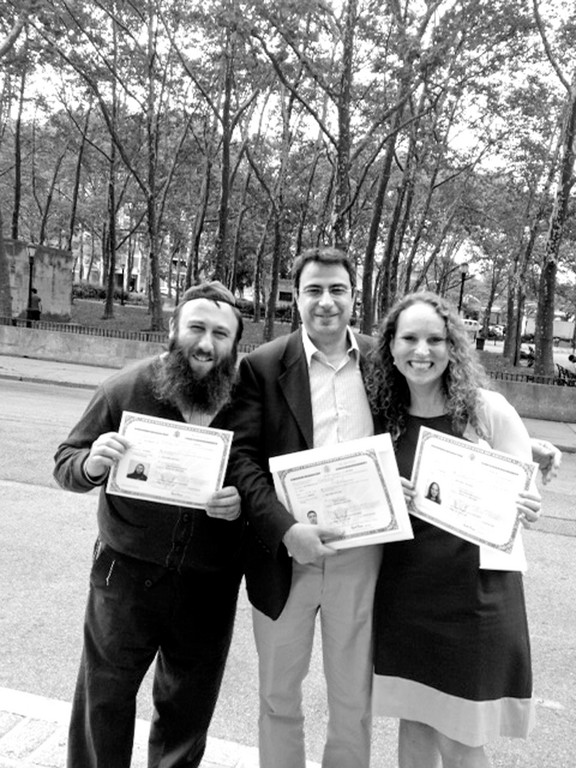Proud to be an American! Dress British, think Yiddish
For the last 12 years, while I called Brooklyn my home, I referred to myself as an Englishman in New York, as I was born and raised in Manchester. That changed Wednesday, when I become a full-fledged Yankee in the Federal courthouse in Brooklyn.
Manchester is not a bad place. With a decent and dedicated Jewish population, anti-Semitism, while it exists, could be worse, and you almost nearly find a decent bagel mit lox.
When we think of “Jewish” places, first of course is our beloved Israel (where one day I hope we will all settle), also Miami, but New York, with its almost two million MOTs, and particularly Brooklyn, where a Jewish renaissance is well under way. There is even a sign on the Williamsburg Bridge that reads, “Leaving Brooklyn: Oy vey!”
As comedian Lenny Bruce once quipped: “If you live in New York, even if you’re Catholic, you’re Jewish.” I love seeing a Sukkah on Fifth Avenue, a minyan at Yankee games, and a kosher knish from a vending machine at an airport. Believe me, this, you wouldn’t see too often in England.
So last week, I took the pledge that made me an American, feeling a sense of pride and privilege to belong to a country that has so embraced and fostered Jewish history, culture and values, in a courthouse surrounded by people of all ages, races and religions.
As I perused the crowded court room, I realized that America really isn’t a melting pot, but rather a salad bowl bursting with a vast variety of “greens” which together make this land something extraordinary.
On the back wall there was a mural depicting people who built our country’s infrastructure. The presiding judge told us the story behind the mural.
The piece, called “The Role of the Immigrant in the Industrial Development of America,” was painted in the 1930s by Edward Laning, and it was originally hung in Ellis Island. Over the years, the mural fell into disrepair and the Immigration and Naturalization Service asked the Chief Judge of the Eastern Court of New York, Jacob Mishler, for permission to destroy the work.
Mishler, who was Jewish, was struck by the mural, which reminded him of his father’s journey to America, and he refused the request. Instead, he commissioned the mural’s restoration and in 1971 moved it to the ceremonial courtroom in the Federal courthouse. Judge Mishler would then ask the immigrants who passed through to look at it and remind themselves of what it means to become an American. Now it hangs in the room where immigrants are naturalized.
As the High Holy days approach I see this scenario as central to our lives. On becoming a citizen of the United States, especially in New York, I see a parallel. During this holy time, we are called to the Heavenly Court to stand trial for our lives; much like new immigrants, we wait patiently to return our souls from exile and enter the Promised Land again.
Rabbi Simcha Weinstein, chaplain at Pratt Institute, author “The Case for Children: Why Parenthood Makes Your World Better,” was voted “New York’s Hippest Rabbi” by WNET 13.

 52.0°,
Overcast
52.0°,
Overcast 







